KILL BILL Decoded: From Pastiche to Incoherent Postmodernism
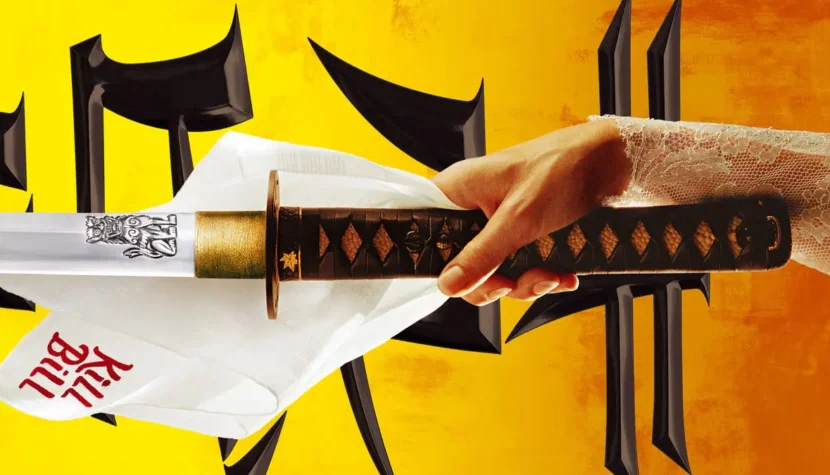
…, with a particular focus on Kill Bill as the ultimate proof of the downfall of this once-great director. The idea for the film might have sounded super cool when told to a bartender in a drunken haze, but each subsequent stage of production, especially the screenplay writing, exposed all the flaws of this pseudo-story and led it astray, providing a perfect recipe for something that looks good in a minute-long teaser on YouTube but is simply unbearable to watch in its full length.
Tarantino will show a similar inconsistency in the stylization of “Death Proof,” this time aiming for the shabby and toxic exploitation films of the ’70s, where such wonders as overly colored grimy frames, specks on the ends of rolls, missing frames, rough cuts, and intentionally poorly framed shots will be the hallmark of the first half of the film, only to disappear as if by magic in the second half. Digital simulation of grindhouse was much better achieved by Rodriguez.
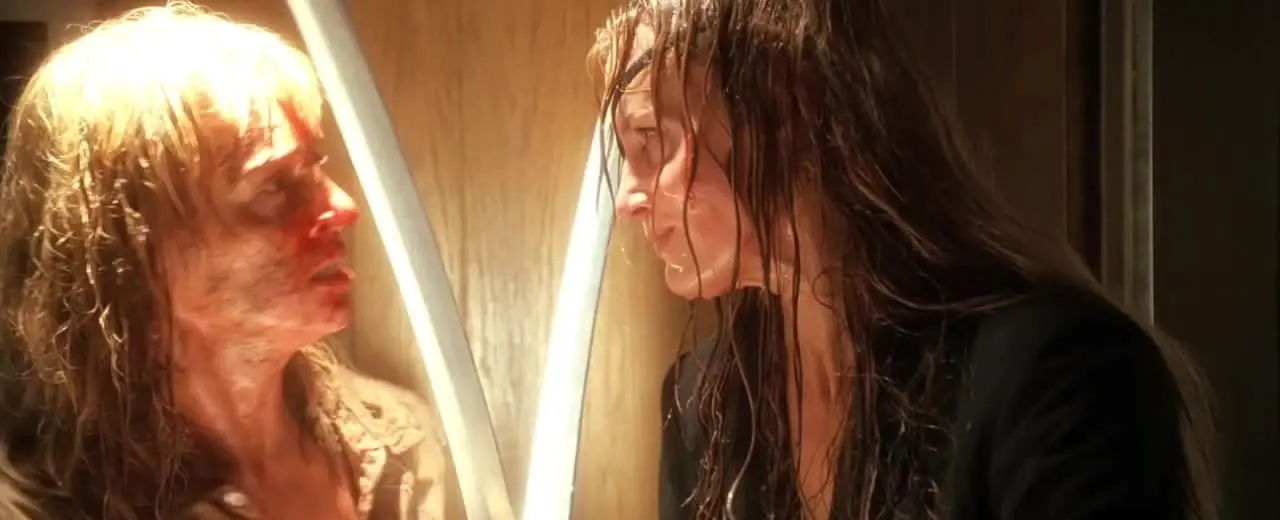
After this typically dilettante lecture on poetics, it’s high time to answer the fundamental question: what is Kill Bill if it isn’t what it used to be? A collage of motifs, styles, and characters? An attempt to sneak in cheap action through the back door into high culture? A bid to elevate this work to the heights of cinematography? Pure fun, a unique phenomenon, a super cool movie? A self-aware monument to pop-cultural postmodernism?
I’ve heard these ramblings hundreds of times from Kill Bill connoisseurs, who intend them to work in favor of the film, but in reality, they make me increasingly dislike it. Let’s forget about genre classification for a moment. Ideologically speaking, Kill Bill reeks from miles away of some unused idea from Quentin’s infancy, when he was gorging himself on trashy movies until he passed out. And framing it that way isn’t an exaggeration, because that’s exactly what Kill Bill reminded me of after my last viewing.
As a kid, I often started wars with toy soldier diapers. I would invent various sensational intrigues and try to mimic a film, more precisely: to mimic the flow of a film’s plot. However, it quickly turned out that I lacked the talent to bring a storyline to a proper conclusion—deus ex machina solutions would appear in my carefree play to redirect the action onto new tracks and sensibly finalize the chaos. In such situations, having gathered enough goodwill, I usually invented an extra character or event that pushed the whole thing forward. I could—like any child, after all—conjure up a solution to a troublesome situation and give the play an appearance of logic.

The starting point of Kill Bill (and I caution: the word “play” cannot be used as an excuse for shoddy work) was, of course, the assassination attempt on the bride. Then Tarantino invented increasingly ridiculous scenes, just to stretch the initial idea to full length. As the mental work progressed, he had an epiphany: since I’m such a film scholar, why not sell this crap to the public and squeeze some money out of them? A cult-looking, perfumed piece of crap will sell like hotcakes, even if it reeks terribly. So Quentin hastily scribbled a few new scenes, inserted them between the existing ones, stitched it all together with thread used for stitching up corpses in morgues, added a bunch of embarrassing monologues—rejected ones that didn’t make it into Pulp Fiction or that he discussed with his buddies over a beer, muddled up the chronology as usual, and then asked Richardson to shoot it nicely.
Thus was born Kill Bill—the first film in cinema history to be a tribute to childlike, untainted by the rigors of logic, primitive thinking. Sorry, Quentin, I haven’t seen greater creative impotence in a long time. I know you had great ideas and two or three key characters to develop, and then you built the rest around them, but this time you simply blew it. Even a moderately astute viewer, not blinded by the mythical cult status of the director, will realize by the end of watching Vol. 1 that someone is throwing salt in their eyes with the unbearable prolongation of what should last no more than half an hour.
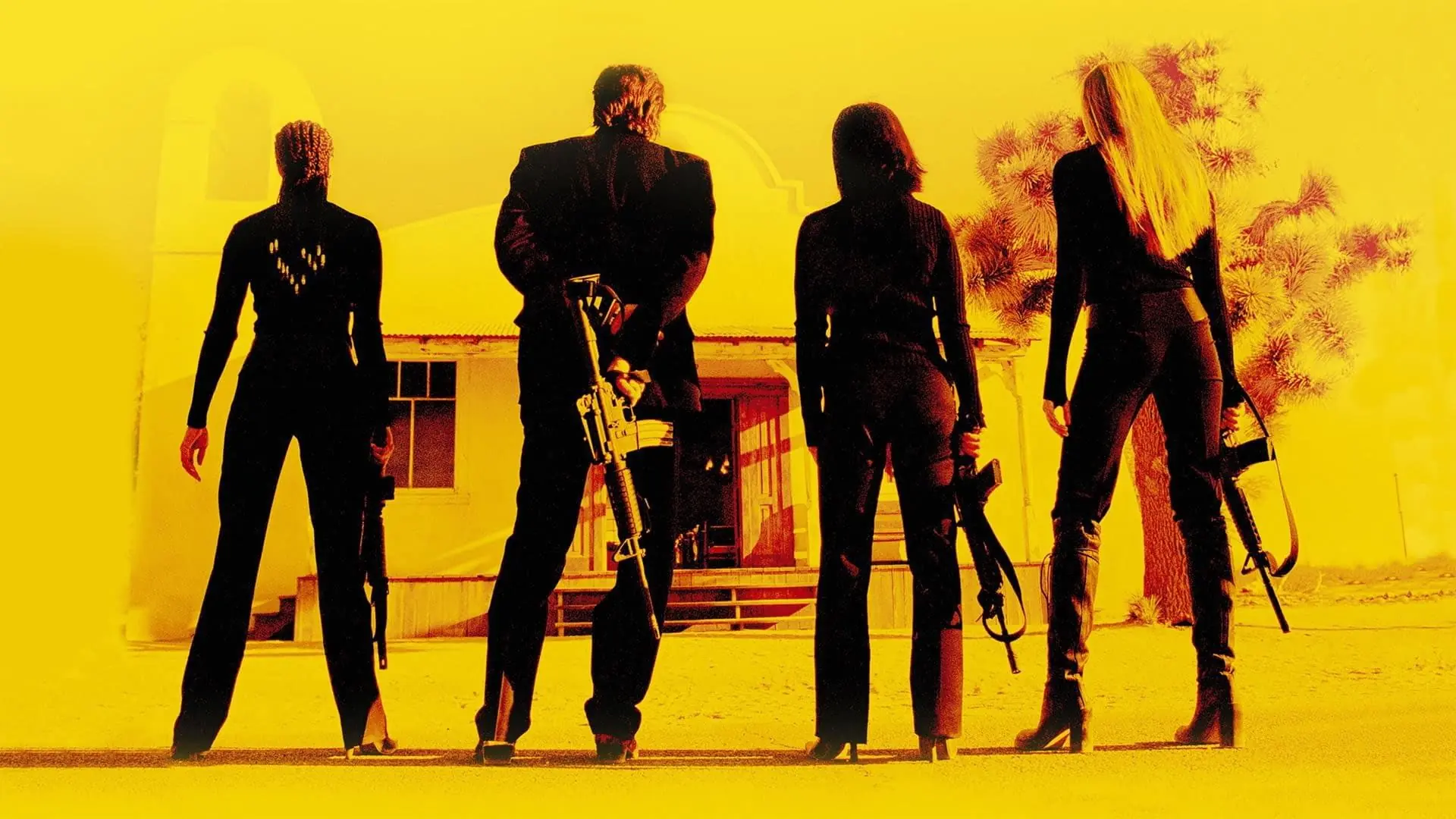
The plot of Kill Bill is as simple as a rake handle, so forgive me for summarizing it in such detail. The Texas prairie on a sunny day. In an abandoned chapel, preparations for a wedding are underway. The Deadly Viper Assassination Squad bursts in, fully armed, initiating a bloody massacre in which the pregnant bride dies. They even kill the organist—an absolutely cult reference to Quentin’s earlier films, since the role of the organist is played by prominent African-American actor Samuel L. Jackson.
Returning to the plot: after some time, it turns out that the bride didn’t die but fell into a coma. Four years of coma pass in a flash: the lady wakes up in the hospital and vows revenge on her would-be murderers. Incidentally, the potentially mega-dramatic moment, the discovery after years that the child died as a result of the shooting, is treated by Quentin as yet another supposedly funny scene. For me, that’s an absolute low. In any case, from the above summary, what emerges is a spitting image of a female version of Hard to Kill. The catch is that by using a narrative structure known as the “night watchman effect,” which involves repeatedly twisting the simplest plots, the film based on a simple concept suddenly turns into something cosmically convoluted.
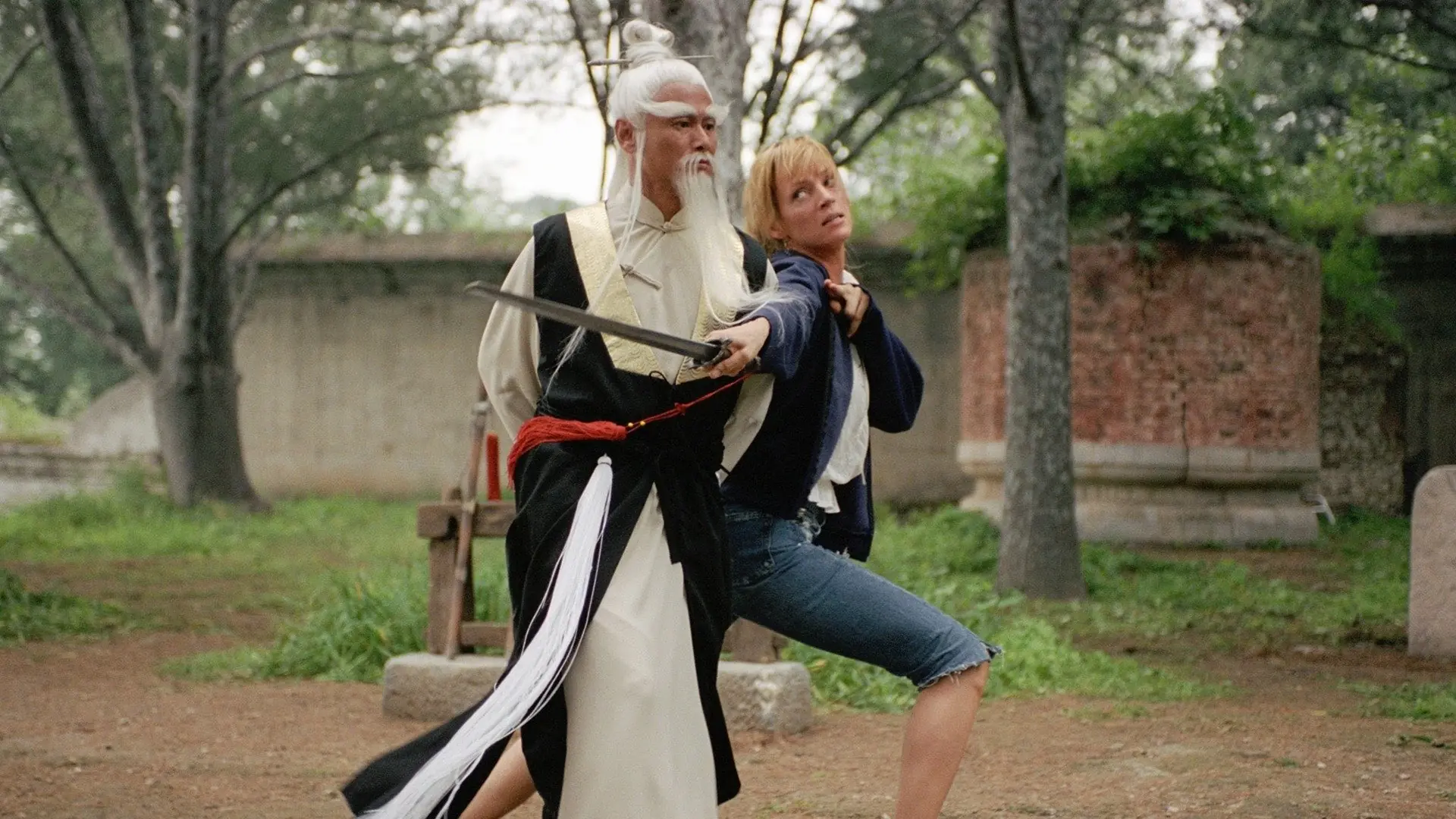
Of course, this is only apparent at first glance, because in reality, it’s still the same stupid story, just postmodernistically chopped up to make it seem more sophisticated. The worst part of all this is that the overly complicated narrative doesn’t intrigue at all. On the contrary, it mercilessly bores and tires, especially since after half an hour, the viewer can predict how it will all end, and in the end, they’re surprised that it did indeed end so cheaply. In this way, I managed to distill one of the components of Quentin’s poetics: non-chronological narration that distracts from an embryonic plot. While in Quentin’s previous films, the narrative minimalism wasn’t so striking because the director regularly smuggled in a ton of real, genuinely engaging human emotions into his stories, in Kill Bill all the flaws of such storytelling immediately come to the fore due to the unfathomable childishness of the concept, the theatrical absurdity of the acting, and the characteristics of the characters themselves, who are a hundred times more complex than they deserve to be.
Besides, how long can you keep rehashing the narrative trick of swapping the ending for the beginning and the beginning for the end? I recently watched True Romance with the new subtitle THE QUENTIN TARANTINO CUT, and it’s the same thing all over again—everything hacked according to the same scheme. Boring, man! Boring and predictable.

The second characteristic of Quentin’s work is my personal favorite: those endless, pseudo-intellectual, philosophical dialogues carried out by characters on the fringes of society. I’m not going to sugarcoat it—this particular quirk of Tarantino’s writing annoys me equally in every film he’s been involved in, with the exception of Reservoir Dogs. These long-winded discussions on such weighty topics as the superiority of Big Kahuna’s fast food over McDonald’s, vanilla shakes over strawberry shakes, film X over film Y, foot massages over massages in general—these have been driving me up the wall for years, especially since I grew up on Westerns where any dialogue containing more than a monosyllable was considered a sign of the speaker’s excessive verbosity.
But despite my aversion to drawn-out chatter, I managed to endure it—I’d grit my teeth and keep watching. Sometimes, I even chuckled at the occasional rude comeback. Because even though the dialogues were often watered down and spoken in contexts that seemed to demand complete, focused silence (like during an execution), when filtered through Quentin’s playful sensibility, they were always unique in their own way and revealed unexpected insights into the characters. However, what I could swallow without much effort, with just a bit of goodwill, in Reservoir Dogs, Pulp Fiction, and Jackie Brown, in Kill Bill has transformed into a caricature of its former self. Here, we witness an outright pile-up of genuinely pointless dialogues, which are nothing more than a cheap imitation of the director’s old style. How Quentin let them pass, and how a world-weary Michael Madsen managed to deliver them—I have no idea.
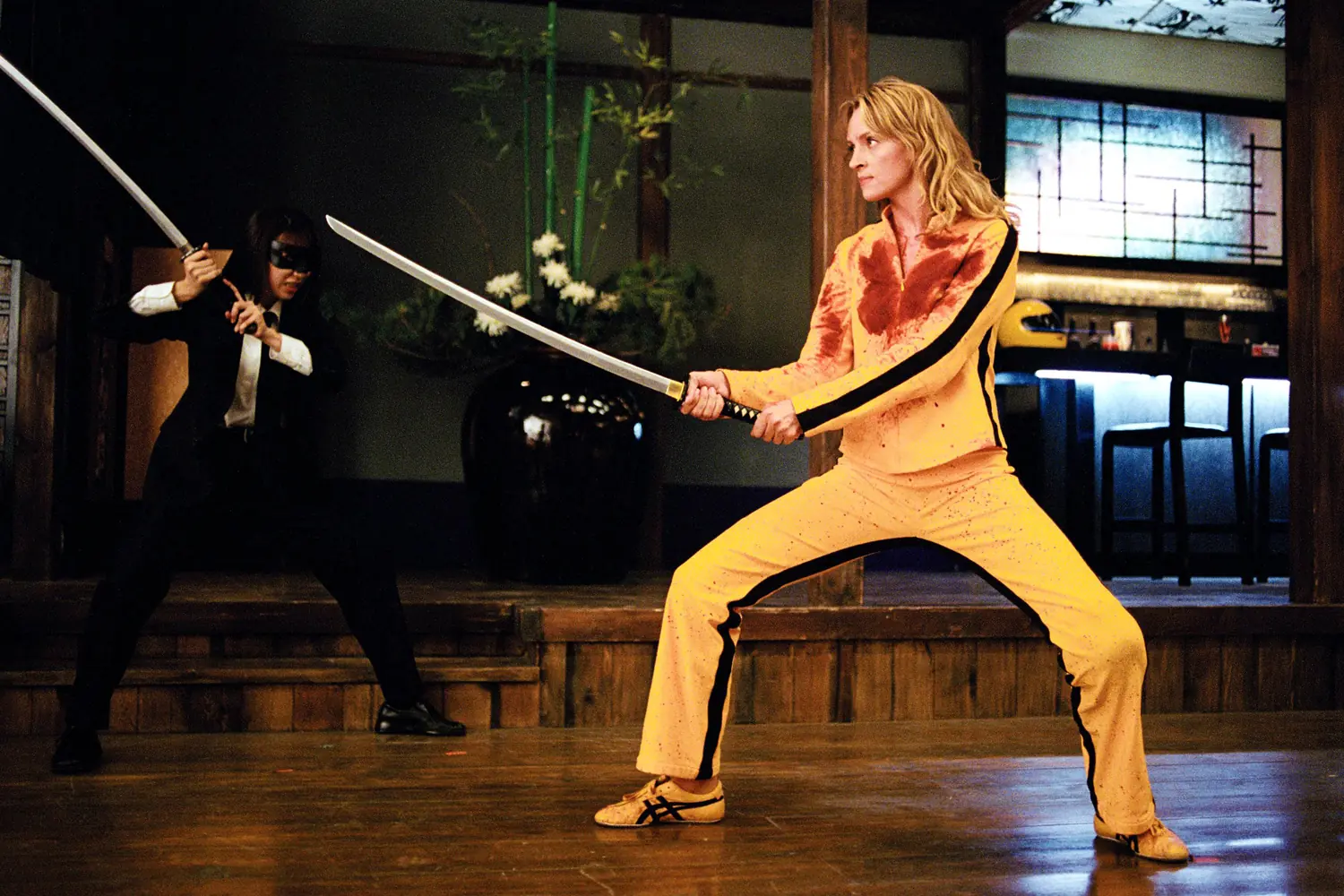
The lines in Kill Bill are so forced, so utterly devoid of wit, that I seriously questioned Tarantino’s mental state while writing them; they come across as fluff meant to fill the void left by a plot that never existed. And that’s not the end of the complaints. The worst part is that during these conversations, the action in Kill Bill comes to a halt, and literally nothing happens. And since the dialogues themselves are meaningless, what we end up with is a total disaster: not only is there a standstill on screen, but the spoken words lack even basic dramatic significance (they don’t drive the plot forward because they’re mostly quotes from other films or aimless monologues) and barely connect with the events. Honestly, it’s enough to make you throw your hands up in despair as you listen to this empty talk.
Another unforgivable flaw of Kill Bill, which fortunately doesn’t fall under the global characteristics of the director’s style, is the incredibly irritating and obtrusive filming of people walking, vehicles moving (cars, motorcycles), and static objects. I don’t know if you noticed, but in Kill Bill, Tarantino goes to great lengths to fill the 200 minutes of screen time he envisioned at the start of filming—whether by playing some cult music, persuading Richardson to shoot a complex scene of the singing, dancing, and drinking clientele at O-Ren’s club in a single take, giving us a panorama of the desert, or framing the face of a person delivering one of those signature monologues about nothing, like the alter-ego of comic book heroes. It’s an overly comprehensive display of film techniques.

As far back as I can remember, Quentin’s typical musical cues—kicking in at just the right moment and perfectly capturing the atmosphere of the events—were a hallmark of his style. As you can probably guess from my wave of praise so far, the music in Kill Bill, which is excellent when listened to without the film, unfortunately becomes more annoying than enjoyable when combined with the images; it’s just a cheap attempt to buy time and distract from the pervasive dramatic and substantive emptiness, nothing more.
What can I say to further upset Kill Bill fans—maybe I’ll repeat for the nth time that this film is a significant step back from the first three—and I don’t hesitate to use a term from the top shelf—masterpieces of Quentin’s work, seemingly aimed only at moderately demanding enthusiasts of the director’s talent. It’s obvious that when Tarantino made this dud titled Kill Bill, he wanted to say something about his camp and Far Eastern film tastes by putting them through a recycling machine. The problem is that this time, the results were disastrous—it seems the guy has aged, and sculpting nonsense isn’t as fun for him as it used to be. I don’t know if it happened due to a mental decline or simple creative negligence, stemming from being blinded by his own erudite cult status. But I do know that Kill Bill might be watchable at a wild party, but under any other circumstances, the viewing experience turns into something painful and hard to digest, even despite—or perhaps because of—the film’s deliberately light and trashy material. A spectacularly botched film.

